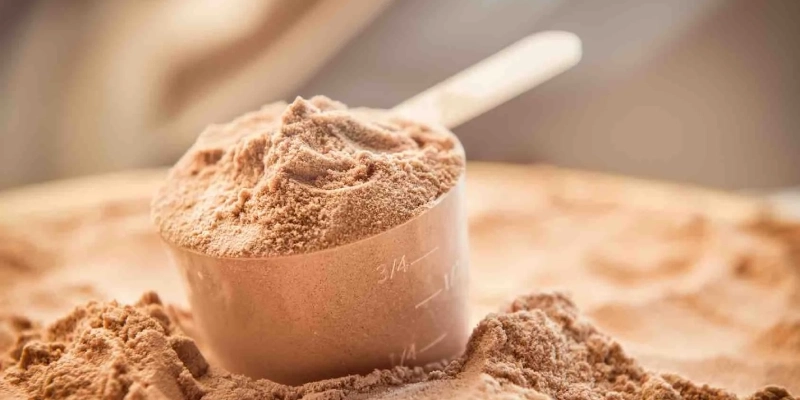When choosing the right protein, the options can feel overwhelming.
Should you stick with the trusted whey protein or explore the growing world of plant-based alternatives?
Both have their champions. Whey protein is a favorite in gyms for its quick absorption, while plant-based protein is celebrated for being eco-friendly and easier on digestion.
But which one truly fits your goals? Let’s break it down.
What Is Whey Protein?

Whey protein is a byproduct of cheese-making.
When milk curdles and is strained, it splits into two parts. The solid curds are used for cheese. The liquid whey is processed, dried, and turned into powder. This powder is a popular dietary supplement.
Whey protein is popular in fitness. It has all nine essential amino acids. It’s absorbed quickly, making it great for muscle recovery after workouts.
Whether you’re an athlete or just someone looking to increase your protein intake, whey protein is often the first choice for many.
Benefits of Whey Protein
- Complete Protein: Whey is a complete protein. It has all nine essential amino acids your body can’t make. This makes it great for muscle growth and repair.
- Quick Absorption: Whey is rapidly digested, which means it delivers amino acids to your muscles faster. This makes it ideal for post-workout recovery.
- Muscle Building: Whey is packed with leucine, a key amino acid for muscle synthesis. When combined with strength training, it is proven to support muscle growth.
Drawbacks of Whey Protein
- Digestive Issues: Many people experience bloating, gas, or discomfort when consuming whey, especially if they’re lactose intolerant or sensitive to dairy.
- Animal Exploitation: Since whey is derived from milk, its production contributes to the dairy industry, which involves animal exploitation.
- Environmental Impact: Dairy farming is resource-intensive, contributing to greenhouse gas emissions, water waste, and deforestation. Thus, whey is less sustainable than plant-based options.
What Is Plant-Based Protein?
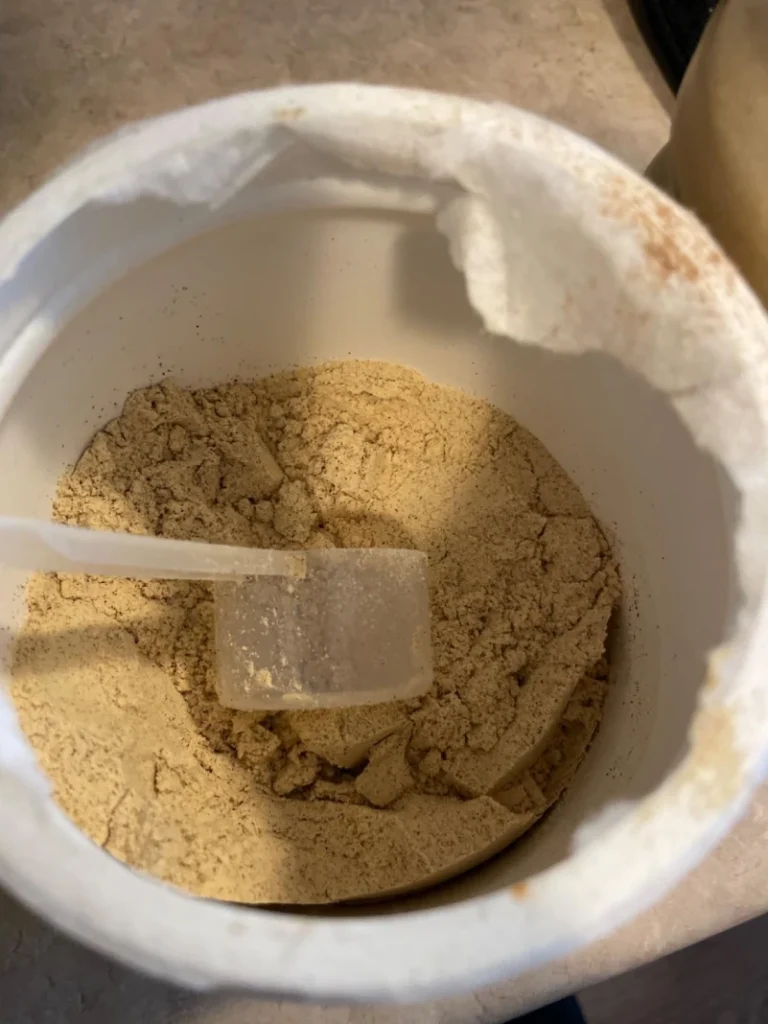
Plant-based protein is derived from natural sources like peas, hemp, rice, soy, and other plants.
Unlike whey, it doesn’t rely on animal products, making it a popular choice for vegans and anyone looking for a more sustainable option.
As interest in plant-based diets grows, so does the variety of plant-based protein powders on the market.
But the big question remains: can plant protein match whey’s effectiveness?
Benefits of Plant-Based Protein
- Easier on Digestion: Plant proteins are less likely to cause bloating or digestive discomfort, making them an excellent choice for people with dairy sensitivities.
- Nutrient-Rich: Many plant-based protein powders come packed with added vitamins, minerals, and fiber that support overall health.
- Environmentally Friendly: Producing plant-based protein uses fewer resources, generates less pollution, and has a lower carbon footprint than dairy-based whey.
- Animal-Friendly: It aligns with vegan and cruelty-free values, offering a guilt-free way to meet protein needs.
Drawbacks of Plant-Based Protein
- Incomplete Amino Acid Profile: Not all plant proteins are complete, meaning they may lack one or more essential amino acids. However, blending different plant protein sources, like pea and rice protein, can address this.
- Taste and Texture: Some people find plant-based protein powders grainy or less smooth than whey. The taste can vary depending on the ingredients and brand.
- Higher Cost: Plant-based protein powders are often more expensive than whey, which can be a factor for those on a budget.
Effectiveness in Muscle Building

When used correctly, both whey and plant-based proteins can support muscle growth. The key is the amino acid profile and overall protein intake.
Whey protein packs a powerful punch with its high leucine content, making it the go-to choice for muscle growth. Its fast absorption means your muscles get the fuel they need—right when needed.
Plant-based protein can be just as effective as whey. Some plant proteins lack certain amino acids, but blends like peas and rice solve this issue. Studies show that with enough protein and strength training, muscle growth is similar.
Ultimately, the difference is minimal when the total protein intake is adequate, making both options viable for athletes and fitness enthusiasts.
The Taste Test

Taste plays a significant role in sticking to your protein routine. Here’s how whey and plant-based proteins compare:
Whey Protein is generally smooth and easy to mix. It blends well with liquids like water or milk. It often has a creamy texture and comes in an extensive of flavors, from classic chocolate to fruity options.
Plant-Based Protein: Plant proteins have improved significantly in recent years, but some still find them slightly gritty or earthy. However, many brands now offer delicious flavors and better formulations to make the experience more enjoyable.
Taste is subjective, so it’s worth trying a few brands and flavors to find what works best for you.
Environmental Impact

When it comes to sustainability, plant-based protein wins—hands down.
Whey comes from dairy farms, which are extremely environmentally damaging. They use a lot of water and land to feed their animals and release greenhouse gases, making them not exactly eco-friendly.
On the other hand, Plant-based protein is much more sustainable. Growing plants takes fewer resources and creates less pollution. It leaves a smaller carbon footprint and has less impact on water and land use.
So, if you care about the planet, plant-based protein is the way to go.
Health Considerations
The protein you choose affects more than just muscles. It impacts your health, too.
Whey protein helps build muscle fast. However, since it comes from dairy, it may contain hormones or antibiotics. It can also cause bloating, acne, or stomach issues, especially if you’re lactose intolerant.
Plant-based protein is a cleaner option. It’s free from dairy, hormones, and antibiotics. It also supports heart health, lowers cholesterol, and adds fiber for better digestion.
Plant-based protein is an excellent choice if you want something easy on your body.
Versatility in Use
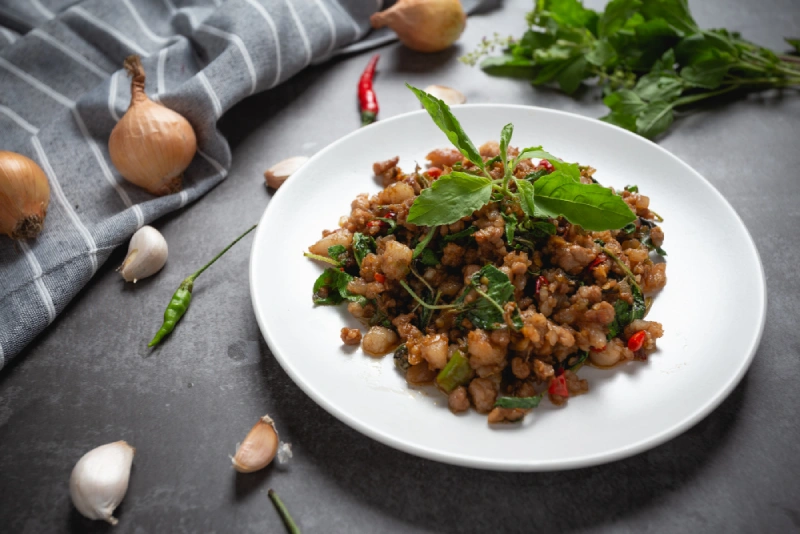
You can add both whey and plant-based proteins to your diet in tasty and creative ways.
Whey protein blends easily into shakes and smoothies, making it great for a quick protein boost. But it doesn’t handle heat well, so it’s not the best for baking or cooking.
Plant-based protein is more versatile. You can mix it into smoothies, bake it into muffins, stir it into soups, or even use it in homemade energy bars and vegan burgers. It holds up well under heat, making it perfect for all recipes.
If you like variety in your meals, plant-based protein gives you more options.
Personal Preferences and Lifestyle
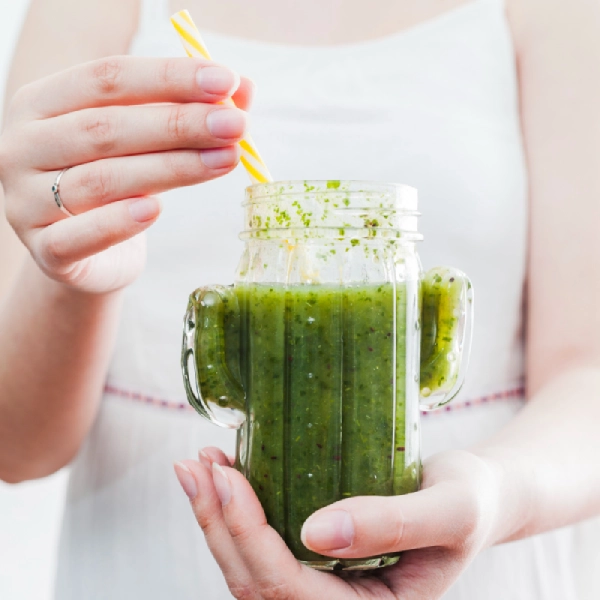
The best protein for you isn’t just about nutrition—it’s also about what fits your lifestyle and values.
For those following a vegan or plant-based diet, the choice is clear.
Plant-based protein is great for ethical and environmental reasons. It still provides the nutrition needed for muscle growth and recovery. It’s also a good choice for those with dairy allergies or sensitivities.
On the other hand, if you prioritize fast absorption and don’t have dietary restrictions, whey protein might be the more convenient choice, especially for post-workout recovery.
However, with the rise of high-quality plant-based blends, many people are making the switch without sacrificing performance.
Popular Plant-Based Protein Sources
Some of the best plant proteins include:
- Pea Protein – High in BCAAs, great for muscle growth.
- Hemp Protein – Rich in omega-3s and fiber, supports heart health.
- Soy Protein – A complete protein comparable to whey.
- Brown Rice Protein – Easy to digest, best when combined with other proteins.
Mixing and Matching Plant Proteins

Since some plant proteins lack certain essential amino acids, combining different sources can help create a complete protein profile. Here are a few great pairings:
- Beans and Rice – A classic combination that provides all essential amino acids, making it a complete protein source.
- Hummus and Whole-Grain Pita – Chickpeas in hummus pair well with whole grains, offering a satisfying and balanced protein boost.
- Quinoa and Lentils – Quinoa is already a complete protein, but adding lentils increases the overall protein content and provides extra fiber.
- Tofu and Quinoa – Tofu, a soy-based protein, is rich in all essential amino acids. Pairing it with quinoa makes for a nutrient-dense, high-protein meal.
- Almond Butter on Whole-Grain Toast – Nuts and whole grains create a balanced plant-based protein snack.
By combining different plant-based sources, you can match the protein quality of whey without compromising nutrition.
Common Myths Debunked
There are plenty of misconceptions about plant-based protein, but let’s set the record straight.
Myth 1: Plant proteins aren’t as effective as whey.
Fact: Studies show that plant-based protein can support muscle growth just as well as whey, as long as you consume enough total protein and a variety of sources.
Myth 2: You can’t build muscle on plant-based protein.
Fact: Many elite athletes and bodybuilders thrive on plant-based diets, proving muscle growth is possible without animal products.
Myth 3: Plant proteins taste bad.
Fact: While some older formulations have a gritty texture, modern plant-based proteins have significantly improved taste and mixability. Many brands now offer smooth, delicious options.
With these myths busted, let’s talk about cost and affordability.
The Price Factor
Cost is a significant consideration when choosing a protein source.
Whey protein is generally cheaper and widely available. Since it has been around for a long time, the market is competitive, keeping prices low.
However, some high-quality whey options, like grass-fed or isolate versions, can be expensive.
Plant-based protein costs more due to the processing involved and the variety of ingredients used to create a complete amino acid profile.
That said, prices are becoming more competitive as demand grows and more brands enter the market.
Versatility Beyond Shakes
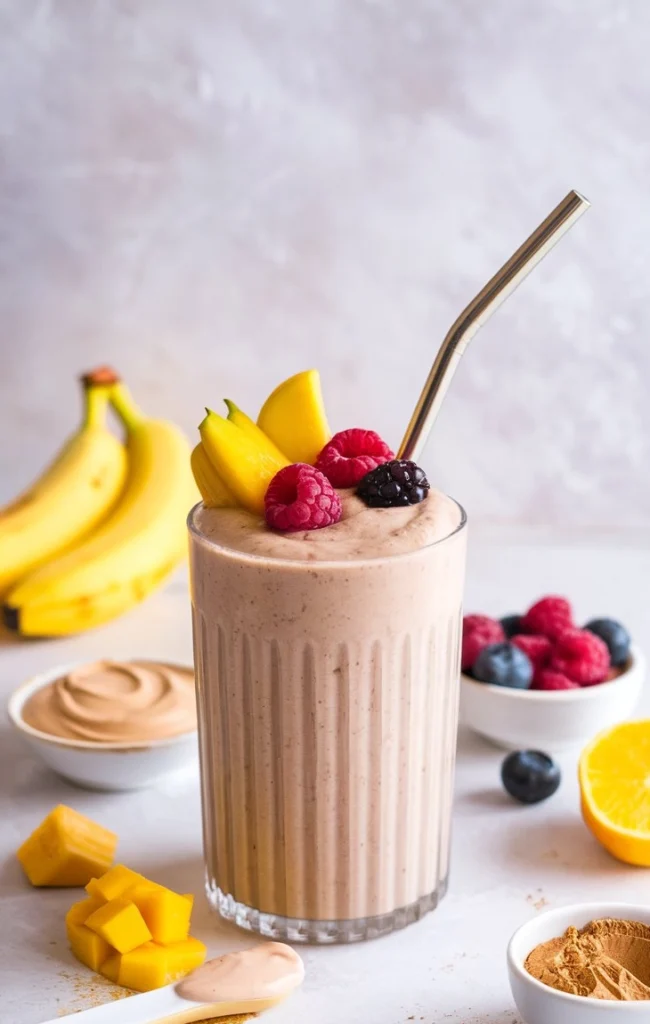
Protein powders aren’t just for shakes—they can be used in various ways to keep your diet interesting.
- Smoothie Bowls – Blend with fruits and plant-based milk, then top with nuts and seeds.
- Oatmeal Boost – Stir a scoop into your morning oats for extra protein.
- Protein Pancakes – Mix into pancake batter for a high-protein breakfast.
- Energy Balls – Combine with nut butter, oats, and a sweetener for a quick snack.
- Baking – Add to muffins, cookies, or homemade protein bars for an extra nutrition boost.
Plant-based proteins, in particular, work well in cooking and baking since they tend to be more heat-stable than whey.
Choosing the Right Protein for You
The best protein depends on your goals, preferences, and dietary needs.
- If you prioritize muscle growth – Both plant-based and whey proteins can be effective as long as you consume enough protein daily.
- If you have digestive issues – Plant-based proteins are often easier on the stomach, especially for those with lactose intolerance.
- If you care about sustainability – Plant-based proteins have a lower environmental impact compared to dairy-based whey.
- If you want a budget-friendly option – Whey protein is typically more affordable, though plant-based options are becoming more competitive.
- If you follow a vegan diet – Plant-based proteins are the clear choice.
How to Incorporate More Protein Into Your Diet
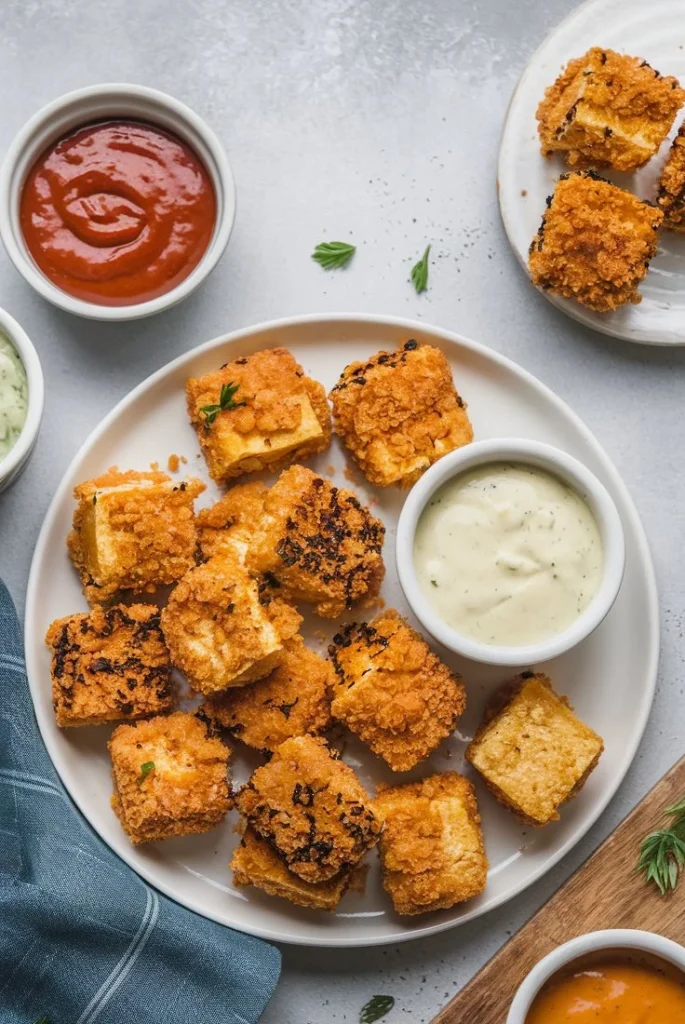
Getting enough protein doesn’t have to be complicated. Here are some easy ways to boost your intake:
- Breakfast Boost – Add protein powder to smoothies, oatmeal, or pancake batter.
- Smart Snacking – Keep protein bars, roasted chickpeas, or nuts on hand for quick snacks.
- Lunchtime Lift – Add tofu, tempeh, beans, or lentils to salads, wraps, or grain bowls.
- Dinner Power – Use high-protein ingredients like quinoa, lentils, or plant-based meat alternatives in your meals.
- Dessert Upgrade – Mix protein powder into baked goods like muffins, cookies, or energy bites.
Final Thoughts
Choosing between plant-based and whey protein depends on your personal goals, dietary preferences, and lifestyle.
Both can help with muscle growth and recovery, but plant-based protein offers additional health benefits, is easier on digestion, and has a lower environmental impact.
Plant-based protein is the way to go if you’re looking for a sustainable, animal-friendly option. If you prioritize quick absorption and cost-effectiveness, whey might be a better fit.
Experiment with different protein sources and find what fits your lifestyle best—your body (and the planet) will thank you!

